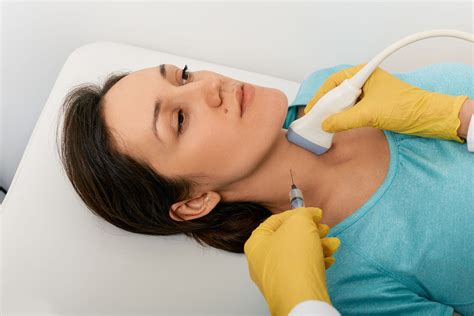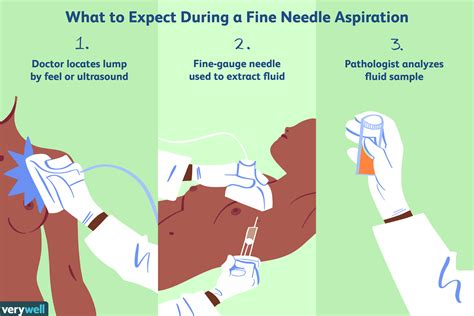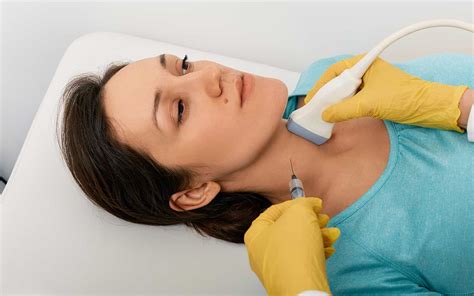Intro
Learn 5 essential tips for a needle biopsy of the breast, including preparation, procedure, and recovery, to ensure a smooth experience with minimal breast biopsy complications and accurate diagnosis.
The importance of breast health cannot be overstated, and one of the key diagnostic tools in assessing breast abnormalities is the needle biopsy. This minimally invasive procedure allows for the collection of tissue samples from the breast, which can then be examined for signs of cancer or other conditions. Understanding the process and benefits of a needle biopsy can help alleviate concerns and empower individuals to take an active role in their breast health.
For many, the term "biopsy" can evoke feelings of anxiety, but it's essential to recognize the significance of this procedure in early detection and treatment. A needle biopsy is often recommended when a mammogram, ultrasound, or clinical breast exam reveals an abnormality that requires further investigation. By examining the tissue sample, healthcare providers can determine the nature of the abnormality, whether it's benign or malignant, and develop an appropriate treatment plan.
The process of a needle biopsy is relatively straightforward, involving the insertion of a thin needle into the breast to collect tissue samples. The procedure is typically performed under local anesthesia to minimize discomfort, and patients can usually resume their normal activities shortly after. Despite its simplicity, the needle biopsy plays a critical role in breast cancer diagnosis, allowing for the detection of cancer at an early stage when it's most treatable.
Understanding the Needle Biopsy Procedure

The needle biopsy procedure begins with the preparation of the patient, which includes cleaning and numbing the area where the needle will be inserted. The healthcare provider then uses imaging technology, such as ultrasound or mammography, to guide the needle to the exact location of the abnormality. Once the needle is in place, a small sample of tissue is collected, which is then sent to a laboratory for examination.
Types of Needle Biopsy
There are several types of needle biopsy, each with its own specific indications and advantages. The fine-needle aspiration biopsy (FNAB) involves the use of a thin needle to collect a sample of cells, while the core needle biopsy (CNB) uses a slightly larger needle to collect a core of tissue. The vacuum-assisted biopsy (VAB) is another type, which uses a special device to collect multiple samples of tissue through a single needle insertion.Benefits of Needle Biopsy

The benefits of needle biopsy are numerous, including its minimally invasive nature, which reduces the risk of complications and scarring. The procedure is also relatively quick, typically taking only a few minutes to perform, and can be done under local anesthesia, minimizing discomfort. Furthermore, needle biopsy allows for the collection of tissue samples without the need for surgical excision, making it an attractive option for diagnosing breast abnormalities.
What to Expect After the Procedure
After the needle biopsy, patients may experience some bruising, swelling, or discomfort at the site of the needle insertion. However, these symptoms are usually mild and temporary, resolving on their own within a few days. It's essential to follow the healthcare provider's instructions for post-procedure care, which may include applying ice to the area, taking pain medication, and avoiding strenuous activities.Preparing for a Needle Biopsy

Preparing for a needle biopsy involves several steps, including discussing any concerns or questions with the healthcare provider, informing them about any medications or allergies, and avoiding certain medications, such as blood thinners, before the procedure. It's also essential to wear comfortable clothing and avoid wearing jewelry or tight clothing that may interfere with the procedure.
Common Concerns and Questions
Many individuals have concerns and questions about the needle biopsy procedure, including its safety, effectiveness, and potential risks. It's essential to address these concerns by discussing them with a healthcare provider, who can provide personalized information and reassurance. Some common questions include:- What are the risks and complications associated with needle biopsy?
- How long does the procedure take, and what can I expect during and after?
- Will I experience any discomfort or pain during the procedure?
- How long will it take to receive the results, and what do they mean?
5 Tips for a Successful Needle Biopsy

To ensure a successful needle biopsy, follow these 5 tips:
- Choose a qualified healthcare provider: Select a healthcare provider with experience in performing needle biopsies to minimize the risk of complications and ensure accurate results.
- Prepare physically and emotionally: Prepare yourself physically by following the healthcare provider's instructions, and emotionally by discussing any concerns or questions you may have.
- Follow post-procedure instructions: Follow the healthcare provider's instructions for post-procedure care to minimize the risk of complications and promote healing.
- Stay informed: Stay informed about the procedure, its benefits, and its risks, and discuss any questions or concerns with your healthcare provider.
- Take care of yourself: Take care of yourself after the procedure by getting plenty of rest, avoiding strenuous activities, and seeking support from family and friends if needed.
Conclusion and Next Steps
In conclusion, a needle biopsy is a valuable diagnostic tool for assessing breast abnormalities, offering a minimally invasive and effective way to collect tissue samples for examination. By understanding the procedure, its benefits, and its risks, individuals can make informed decisions about their breast health and take an active role in their care. If you have any concerns or questions about needle biopsy, discuss them with your healthcare provider, who can provide personalized guidance and support.What is a needle biopsy, and how is it performed?
+A needle biopsy is a minimally invasive procedure that involves the insertion of a thin needle into the breast to collect tissue samples. The procedure is typically performed under local anesthesia and guided by imaging technology, such as ultrasound or mammography.
What are the benefits of a needle biopsy?
+The benefits of a needle biopsy include its minimally invasive nature, reducing the risk of complications and scarring, and its ability to collect tissue samples without the need for surgical excision.
What can I expect after a needle biopsy?
+After a needle biopsy, you may experience some bruising, swelling, or discomfort at the site of the needle insertion. However, these symptoms are usually mild and temporary, resolving on their own within a few days.
We invite you to share your thoughts and experiences with needle biopsy in the comments below. If you have any questions or concerns, please don't hesitate to reach out to your healthcare provider. By working together, we can promote breast health and well-being, and support individuals in making informed decisions about their care.
